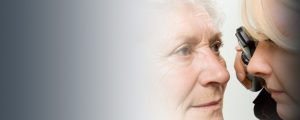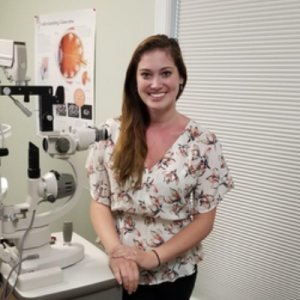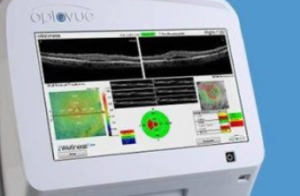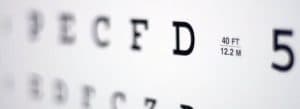Did you know that the Snellen eye chart is the most commonly used chart during an eye exam?
If you’ve ever had an eye exam, you’re probably familiar with the eye chart of letters on the wall that your eye doctor asked you to read.
What is 20/20 vision?
Before understanding the eye chart, it is important to know what 20/20 vision actually means.
It’s a numerical representation of how well you can see something from a distance of 20 feet in comparison to someone with “perfect” vision looking at the same object from the same distance.
Your visual acuity may be 20/100 if you have poor eyesight or ‘low vision’.
This means that someone with perfect vision standing 100 feet away can read the tiniest line on the eye chart that you can read at 20 feet.
Schedule an eye exam with an eye doctor near you to see if you have 20/20 vision or need glasses or an updated prescription.
SEE RELATED: What Is a Visual Acuity Test?
What are eye charts?
Dr. Herman Snellen, a Dutch eye doctor, devised the first eye chart in 1862 to measure monocular and binocular visual acuity. Despite the existence of various eye charts, Snellen eye charts have remained the most common among eye care practitioners.
The Snellen eye chart
This letter chart design is most likely what you’re used to seeing at your eye doctor’s office.
The Snellen eye chart starts with a single, large letter E at the top of the chart. Each line below gets incrementally smaller until the letters are so small that the only people who have better than 20/20 vision can read them. The letter sizes are accurately determined to show perfect alignment to the 20/20 scale’s visual norm.
Even the types of letters used are carefully chosen. You’ll notice, next time you look at an eye chart, not every letter of the alphabet is used. Only the letters C, D, E, F, L, N, O, P, T and Z. Some letters aren’t used because they can easily be identified by the human brain even if they are too blurry to be seen clearly.
For example, the letter Q. The brain is able to quickly pick up on the shadow of the tail that comes off that letter and determine what it is, since there is no other letter like it.
In addition to the Snellen letter charts, there is also a Stellen image chart for children and adults who are unable to read.
What are eye charts used for?
Visual acuity — how sharp your eyesight is — is measured using eye charts.
Your ability to see the letters tells your optometrist whether you need glasses or contact lenses to improve your vision, or if your lens prescription needs to be changed.
Your optometrist can create an accurate and customized lens prescription by analyzing the results of how clearly you see each line. Most routine eye exams, which are recommended every 1-2 years or as often as your optometrist suggests, use eye charts.
LEARN MORE: Guide to Eye Exams
If you feel your vision is not sharp, schedule an eye exam with an eye doctor near you, to see if you need prescription glasses or an updated prescription.










